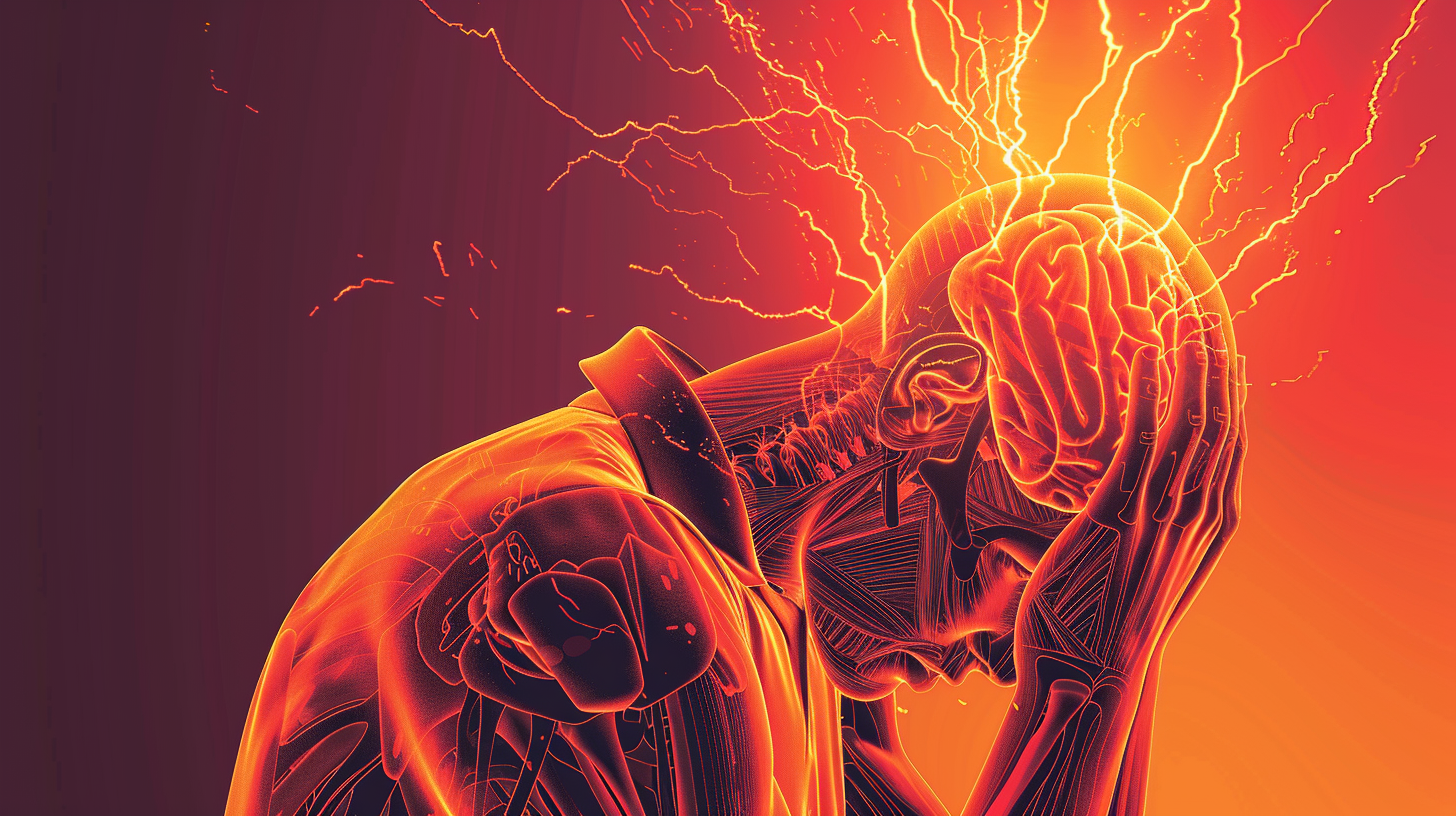Table of Contents Show
Just as the relentless tide shapes the coastline, chronic pain reshapes lives, leaving us searching for solid ground. We’ve witnessed significant strides in understanding the mechanisms behind this pervasive condition, and there’s a palpable sense of hope on the horizon. Our journey through the latest breakthroughs and innovations reveals a landscape where genetics, lifestyle, and cutting-edge therapies converge, offering more personalized and effective management strategies. We find ourselves at a pivotal moment, ready to explore how these developments can transform the daily reality for millions. Let’s engage in this exploration together, considering how the future of pain management might look.
Key Takeaways
- Holistic pain management involves understanding individual pain perception and signals.
- Genetic factors play a crucial role in pain development, tolerance, and treatment response.
- Innovations like neurostimulation and non-opioid medications are revolutionizing chronic pain therapies.
- Digital tools and personalized medicine are enhancing the effectiveness and accessibility of pain management.
Understanding Chronic Pain
To effectively manage chronic pain, understanding its complex nature and how it affects millions globally is crucial. We’re delving deep into its intricacies to shed light on this pervasive issue, aiming to empower those who yearn for liberation from its grasp.
Chronic pain isn’t just a symptom; it’s a multifaceted condition that transcends mere physical discomfort, often weaving itself into the fabric of one’s emotional and psychological well-being. We’ve come to realize that it doesn’t discriminate, touching lives across every age, gender, and background, making it a universal adversary in the quest for freedom.
Acknowledging the subjective experience of pain is our first step toward mastery over it. Pain is not simply a signal of injury or illness; chronic pain can persist long after the initial cause has healed, becoming a relentless force that challenges our resilience daily. This understanding compels us to look beyond traditional pain management techniques, advocating for a holistic approach that encompasses mind, body, and spirit.
We’re learning that managing chronic pain isn’t about silencing it but rather understanding its language and what it signifies about our overall health. It’s about tuning into our bodies, recognizing the interconnectedness of our physical sensations with our mental states, and seeking solutions that address both.
In our journey toward managing chronic pain, we’re not just seeking relief; we’re pursuing freedom. Freedom to live our lives unencumbered by the chains of persistent discomfort, freedom to enjoy moments without the shadow of pain looming over us. Together, we’re traversing this complex terrain, armed with knowledge and a collective will to reclaim our lives from chronic pain’s grip.
Breakthroughs in Pain Research
As we explore breakthroughs in pain research, it’s clear that innovative therapies are transforming the landscape of chronic pain management. We’re stepping into a new era where understanding and treating chronic pain is more about targeting the underlying causes rather than merely masking symptoms. This shift promises more freedom and quality of life for those who’ve been battling relentless discomfort.
Recent advancements in neurostimulation techniques, for instance, offer a beacon of hope. These methods, such as transcranial magnetic stimulation (TMS) and spinal cord stimulation (SCS), have shown remarkable success in reducing pain levels for many. They work by modulating the nervous system’s activity, basically ‘retraining’ it to perceive pain differently. What’s exciting is that these treatments can be personalized, adapting to each individual’s specific pain profile.
We’re also witnessing the rise of biologic medications designed to target pain at the molecular level. These drugs, unlike traditional painkillers, aim to disrupt the biochemical pathways that fuel chronic pain. The focus here is on precision medicine – treatments tailored to the unique genetic makeup and biochemical environment of the individual.
Additionally, the integration of digital health tools into pain management strategies is providing newfound freedom. Mobile apps that guide users through mindfulness and cognitive behavioral therapy techniques are empowering people to take control of their pain management journey. These technologies not only offer on-the-go support but also help in tracking progress, ensuring a more informed and personalized approach to managing chronic pain.
Together, these breakthroughs are paving the way towards a future where managing chronic pain is not just about coping, but thriving.
The Role of Genetics
We’re now turning our attention to how genetics play a pivotal role in chronic pain management. Our genes not only influence the factors contributing to pain but also how we perceive pain and respond to different treatments. This understanding opens new pathways for personalized pain management strategies, taking into account individual genetic makeup.
Genetic Factors in Pain
Our understanding of chronic pain has greatly deepened with the recognition that genetics play an important role in its development and persistence. We’ve discovered that certain genetic variations can increase an individual’s risk of developing chronic pain, suggesting that our genes could profoundly influence how we experience pain. This insight opens the door to personalized pain management strategies, offering us the freedom to tailor treatments that are more effective and less burdensome.
| Genetic Factor | Impact on Pain Experience |
|---|---|
| Gene Variations | Influence pain sensitivity |
| Genetic Mutations | Can lead to chronic pain conditions |
| Inherited Traits | Determine pain tolerance levels |
Hereditary Pain Sensitivity Variations
Genetics play an essential role in determining an individual’s pain sensitivity, with variations in our DNA shaping how we perceive and endure pain. It’s fascinating how our genetic makeup grants us unique experiences with pain, highlighting the importance of personalized approaches in managing chronic pain. To understand this better, let’s break down the key points:
- Genetic Diversity: Everyone’s genetic code is unique, which means we all have different thresholds for pain.
- Family Patterns: Often, we can trace our pain sensitivity similarities through our family lines, indicating a hereditary component.
- Research Revelations: Ongoing studies continue to uncover specific genes linked to pain sensitivity, offering hope for targeted treatments.
We’re all aspiring for a life with less pain and more freedom, and grasping the genetic aspects of pain sensitivity moves us closer to that goal.
DNA and Pain Management
Delving into the intricate relationship between DNA and pain management, it becomes clear that genetics play a pivotal role in shaping personalized treatment strategies. We’re discovering that our genetic makeup not only influences how we experience pain but also how we respond to various treatments. This insight opens the door to tailor-made therapies that promise more freedom and control over our pain management journey. By analyzing our DNA, we can identify which medications and therapies are likely to be most effective, reducing the trial and error that so often characterizes pain treatment. This approach not only enhances the efficacy of pain management but also minimizes side effects, leading us towards a future where managing chronic pain is more precise, personal, and empowering.
Innovations in Pharmacotherapy
We’re now turning our focus to the cutting-edge advancements in pharmacotherapy that are redefining how we manage chronic pain. Innovations such as targeted drug delivery systems, the development of non-opioid painkillers, and personalized medicine approaches promise to offer more effective and safer alternatives for patients. These advancements underscore a significant shift towards more specialized and patient-centric treatment options in chronic pain management.
Targeted Drug Delivery Advances
Innovations in pharmacotherapy, particularly targeted drug delivery systems, are revolutionizing the way we manage chronic pain. We’re seeing fantastic strides in how these technologies offer us freedom from the constraints of traditional pain management methods. Here’s why we’re excited:
- Precision: These systems deliver medication directly to the pain source, minimizing side effects and maximizing relief.
- Control: We’re gaining back control over our lives, with the ability to manage pain more effectively on our terms.
- Innovation: Continuous advancements promise even more personalized and efficient treatments in the near future.
This approach is not just about treating symptoms; it’s about reclaiming our lives from chronic pain. The promise of targeted drug delivery systems gives us hope for a future where we can live more freely, without the shadow of pain lurking behind every decision.
Non-Opioid Painkillers Development
A significant shift towards non-opioid painkillers marks a new era in pain management, offering safer and more targeted alternatives for those suffering from chronic pain. We’re witnessing a revolution in how we address pain, moving away from traditional opioid treatments that come with high risks of addiction and side effects. Instead, we’re embracing a new generation of medications that target pain more precisely without sacrificing our freedom to live life to the fullest. These innovations in pharmacotherapy mean we’re not just tackling pain; we’re doing so in a way that maintains our quality of life, offering hope for a future where managing chronic pain doesn’t mean being tethered to the risks associated with opioids. It’s a promising time for anyone seeking liberation from chronic pain.
Personalized Medicine Approaches
As the field of pain management evolves, personalized medicine approaches are revolutionizing the way we tackle chronic pain through targeted pharmacotherapy. We’re now able to tailor treatments more precisely to each individual’s genetic makeup, lifestyle, and the specific characteristics of their pain. This shift towards personalization is offering freedom from the one-size-fits-all solutions of the past.
Here’s how we’re making it happen:
- Genetic Testing: Identifying genetic markers that predict how well someone will respond to certain medications.
- Advanced Diagnostics: Using sophisticated imaging and diagnostic tools to understand the unique pathways of pain in each patient.
- Customized Treatment Plans: Crafting drug regimens that are as unique as the individuals seeking relief, minimizing side effects and maximizing efficacy.
It’s all about giving patients control over their pain and their lives.
Non-Pharmacological Approaches
Several non-pharmacological approaches have emerged as effective alternatives for managing chronic pain. We’re exploring these options because we acknowledge the desire for freedom from medication and its potential side effects. These strategies offer a liberating choice, empowering individuals to take control of their pain management in a more natural way.
One remarkable approach is physical therapy, which focuses on movement and manual therapy techniques to reduce pain and improve function. It’s not just about exercises; it’s about tailoring a program that aligns with your body’s needs and your personal goals.
Another powerful method is cognitive-behavioral therapy (CBT). This isn’t just talking; it’s about changing the way you perceive and respond to pain. CBT equips you with tools to tackle the mental and emotional aspects of chronic pain, fostering a stronger, more resilient mindset.
Acupuncture, with its roots in traditional Chinese medicine, offers a unique perspective on pain relief. It involves the insertion of thin needles into specific points on the body, believed to rebalance your energy flow. Many find it a liberating experience, as it provides relief without the need for medications.
Here’s a quick overview to help you enjoy what we’ve discussed:
| Method | Focus | Benefit |
|---|---|---|
| Physical Therapy | Movement and manual therapy | Reduces pain, improves function |
| CBT | Mental and emotional health | Changes perception and response to pain |
| Acupuncture | Energy flow | Provides relief without medication |
These approaches offer a path to managing chronic pain that respects your desire for freedom and autonomy. They’re about finding what works for you, so you can live your life on your terms.
The Impact of Lifestyle Changes
Incorporating lifestyle changes can greatly enhance the effectiveness of chronic pain management strategies. We comprehend that living with chronic pain can feel like being trapped in your own body, constantly searching for a way out. However, we’ve found that certain adjustments can substantially lighten this burden, offering not just relief but a sense of liberation. It’s about reclaiming control over our bodies and, by extension, our lives. Here’s how we can start:
-
Prioritizing Sleep: Quality sleep is essential. It’s the foundation upon which our body repairs itself. By establishing a regular sleep schedule and creating a restful environment, we’re not just resting; we’re actively healing.
-
Adopting a Balanced Diet: Nutrition plays a pivotal role in managing chronic pain. Anti-inflammatory foods like leafy greens, berries, and fatty fish can help reduce pain levels. It’s not about restricting ourselves; it’s about feeding our bodies the fuel they need to fight back.
-
Engaging in Regular Physical Activity: This might sound counterintuitive, especially on days when moving feels impossible. Yet, gentle movements, be it yoga, walking, or swimming, can significantly reduce pain over time. It’s about finding what works for us and embracing it, not as a chore, but as a daily act of self-care.
We’re not just managing pain; we’re taking back our freedom, one step at a time. It’s about creating a lifestyle that supports our wellbeing, empowering us to live fully despite chronic pain. Let’s not wait for a better moment; the time to start is now.
Personalized Pain Management
Understanding that each individual experiences pain uniquely, we’re turning our focus to personalized pain management strategies. This approach is about tailoring treatments to fit not just the type of pain one is experiencing, but also their lifestyle, preferences, and specific health conditions. It’s about freeing oneself from the one-size-fits-all mentality and embracing a path that acknowledges the intricacies of our bodies and lives.
Here’s a quick overview:
| Aspect | Importance |
|---|---|
| Individual Health Profiles | Recognizes unique health conditions and history. |
| Lifestyle Considerations | Aligns treatment with daily activities and goals. |
| Patient Preferences | Incorporates personal choices in therapy options. |
By adopting this personalized approach, we’re not just treating pain; we’re acknowledging the person behind it. It starts with a thorough assessment that looks at everything from medical history to personal goals. This information becomes the foundation for a tailored pain management plan.
We’re also empowering individuals to take an active role in their treatment. This means regular check-ins and adjustments based on how one is responding to therapy. It’s a dynamic process, one that evolves as needs and circumstances change.
Emerging Technologies in Treatment
We’re exploring innovative technologies that are transforming the landscape of chronic pain management. As we investigate this domain, we’re uncovering approaches that not only promise relief but also empower individuals to reclaim control over their lives. These technologies signal a move away from a one-size-fits-all model, towards more tailored and effective solutions.
Here are three emerging technologies that stand out:
-
Wearable Pain Relief Devices: These gadgets, often wearable as patches or bands, deliver targeted electrical stimulation or use thermal therapy to alleviate pain. They’re not just effective; they’re also incredibly convenient, allowing users to manage their pain on the go without resorting to medication.
-
Virtual Reality (VR) Therapy: VR is no longer just for gaming. In chronic pain management, it’s used to transport patients into immersive environments that distract from pain, reduce stress, and teach coping mechanisms. This technology offers an escape, providing a mental break from the constant burden of chronic pain.
-
Smartphone Apps for Pain Management: There’s an app for almost everything, including chronic pain management. These apps can track pain levels, offer guided meditation and breathing exercises, and even connect users with virtual support communities. The power to manage pain is literally at our fingertips, providing a sense of autonomy and freedom.
We’re not just waiting for the future to find relief; we’re actively shaping it with these technologies. By embracing these innovations, we’re not only addressing the physical aspect of chronic pain but also empowering ourselves to lead freer, more fulfilling lives.
Future Directions in Pain Therapy
As we explore the landscape of chronic pain management, it’s clear that the horizon of therapy is broadening, promising even more innovative solutions in the future. The relentless pursuit of freedom from pain drives us to push the boundaries of what’s possible in medical science and patient care. We’re not just looking at incremental improvements but at transformative changes that can enhance the quality of life for those suffering from chronic pain.
Our journey into the future of pain therapy is marked by the integration of advanced technologies and personalized medicine. We’re moving towards treatments that are tailored to the individual’s genetic makeup, lifestyle, and the specific characteristics of their pain. This means we’re not far from a world where pain management is highly effective and side effects are minimal.
Imagine therapies that harness the power of artificial intelligence to predict pain patterns and prevent flare-ups before they even start. We’re also exploring the potential of regenerative medicine—using the body’s own cells to heal and reduce pain. These aren’t distant dreams; they’re the next chapters in our ongoing story of innovation.
We’re committed to breaking down the barriers that stand between our current reality and a future where chronic pain is no longer a life sentence. Through collaboration, research, and a relentless pursuit of excellence, we’re opening doors to new possibilities. It’s a future we’re keen to embrace, one where everyone has the freedom to live their lives to the fullest, unencumbered by chronic pain.
Conclusion
In our journey through the dense forest of chronic pain, we’ve discovered new paths and innovative tools to navigate its complexities. Like explorers uncovering hidden treasures, we’ve found that combining the art of genetics, the science of pharmacotherapy, and the wisdom of non-pharmacological methods lights the way to personalized pain management. With emerging technologies as our compass, we’re charting a course toward a future where pain’s shadow is diminished, promising brighter days for all who journey with us.








